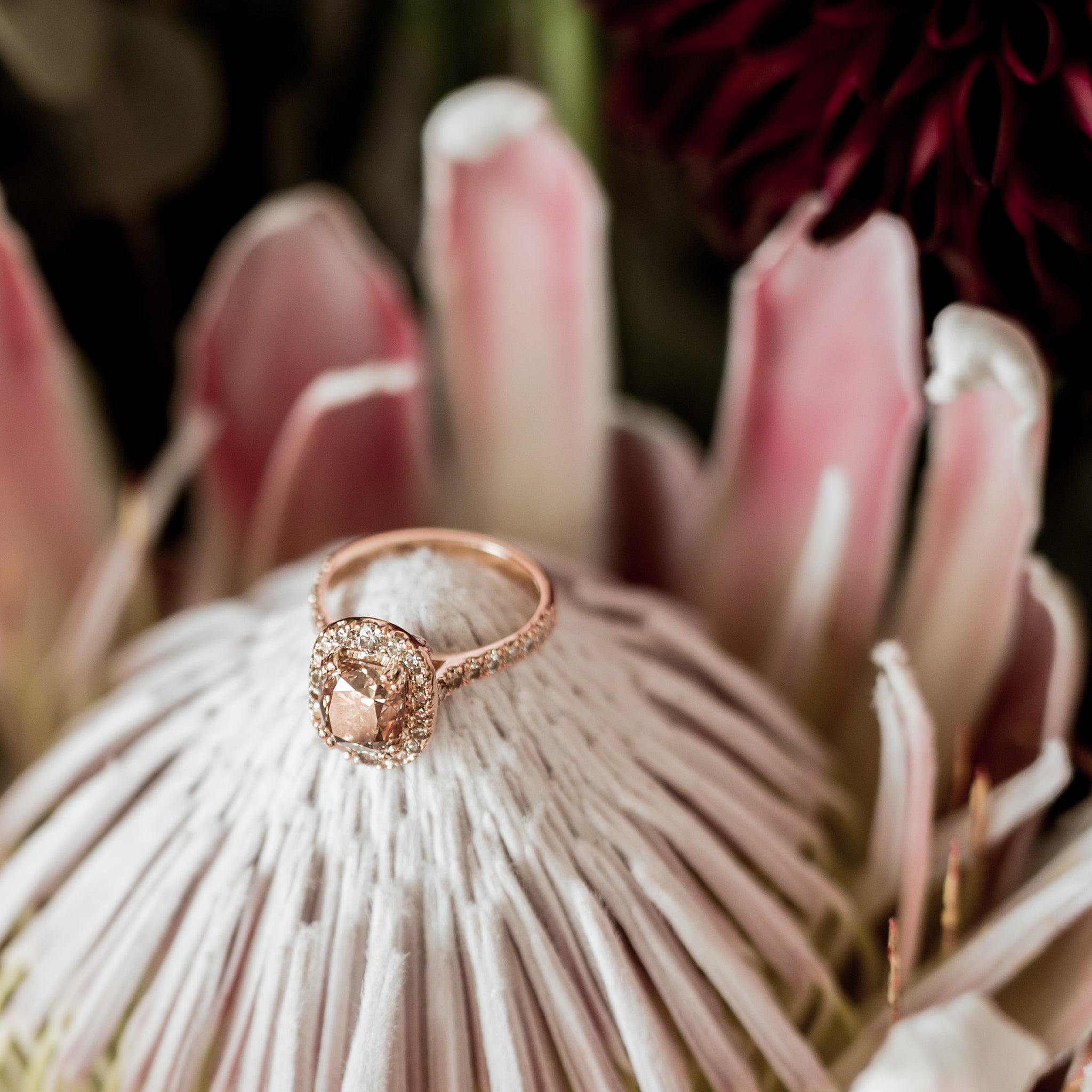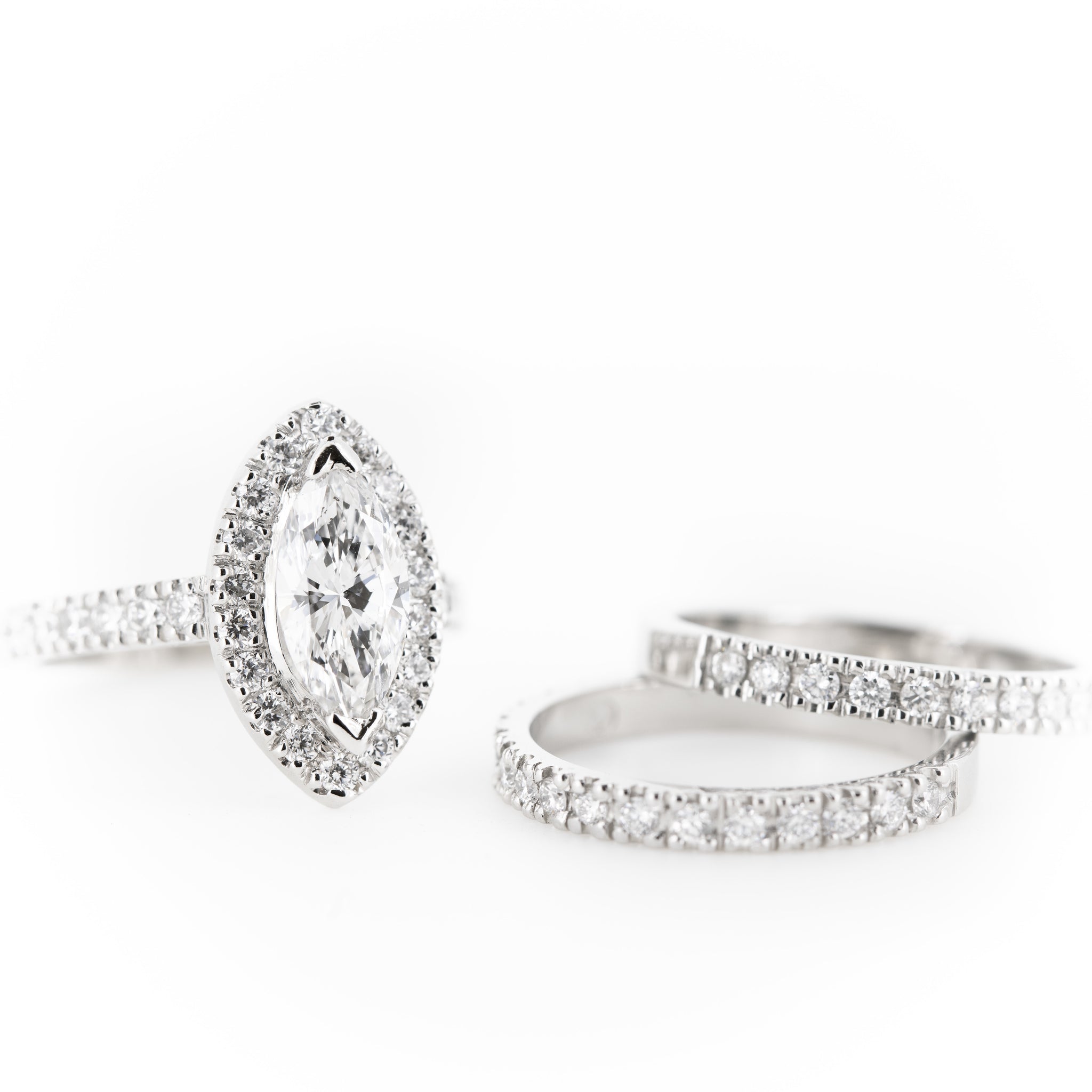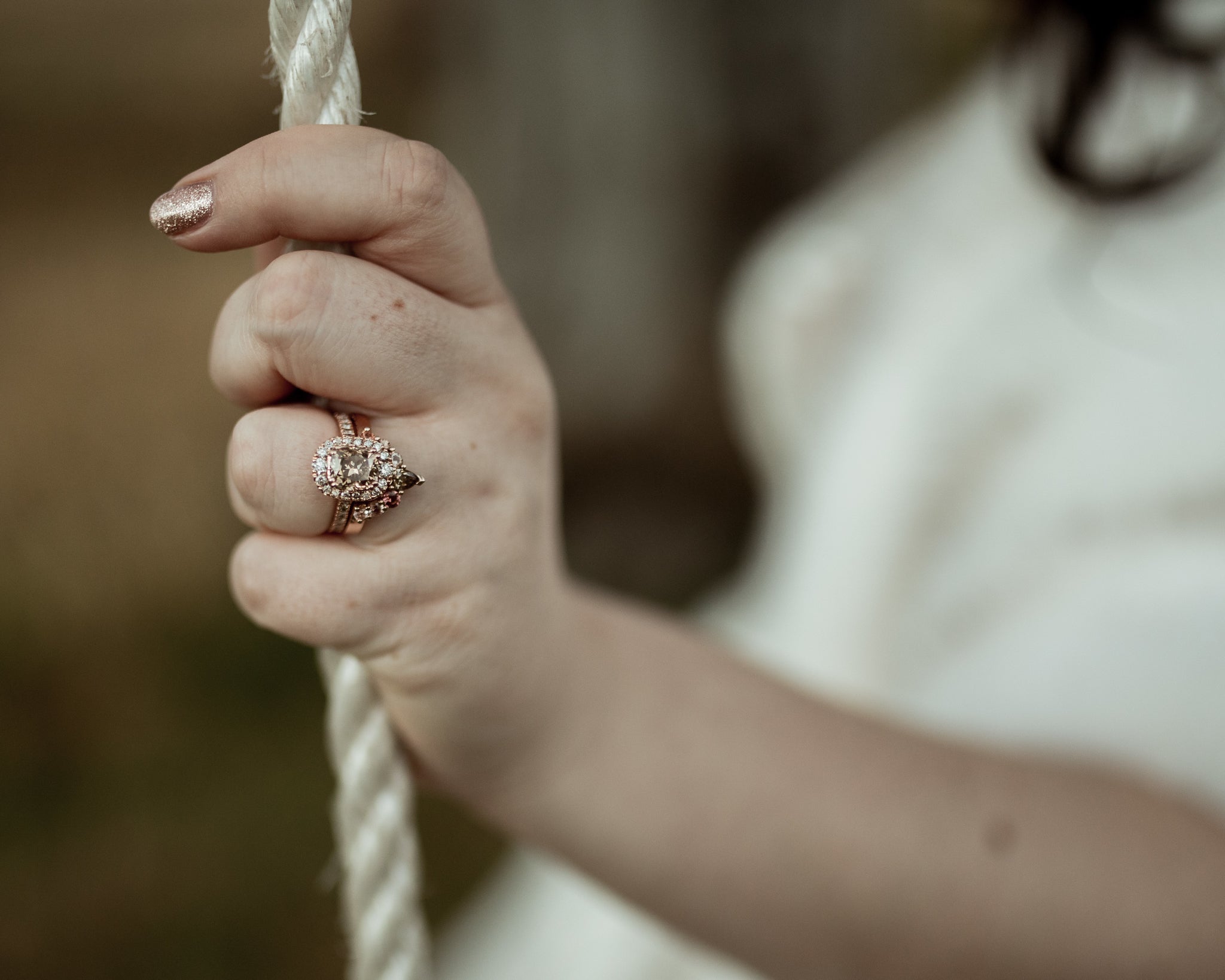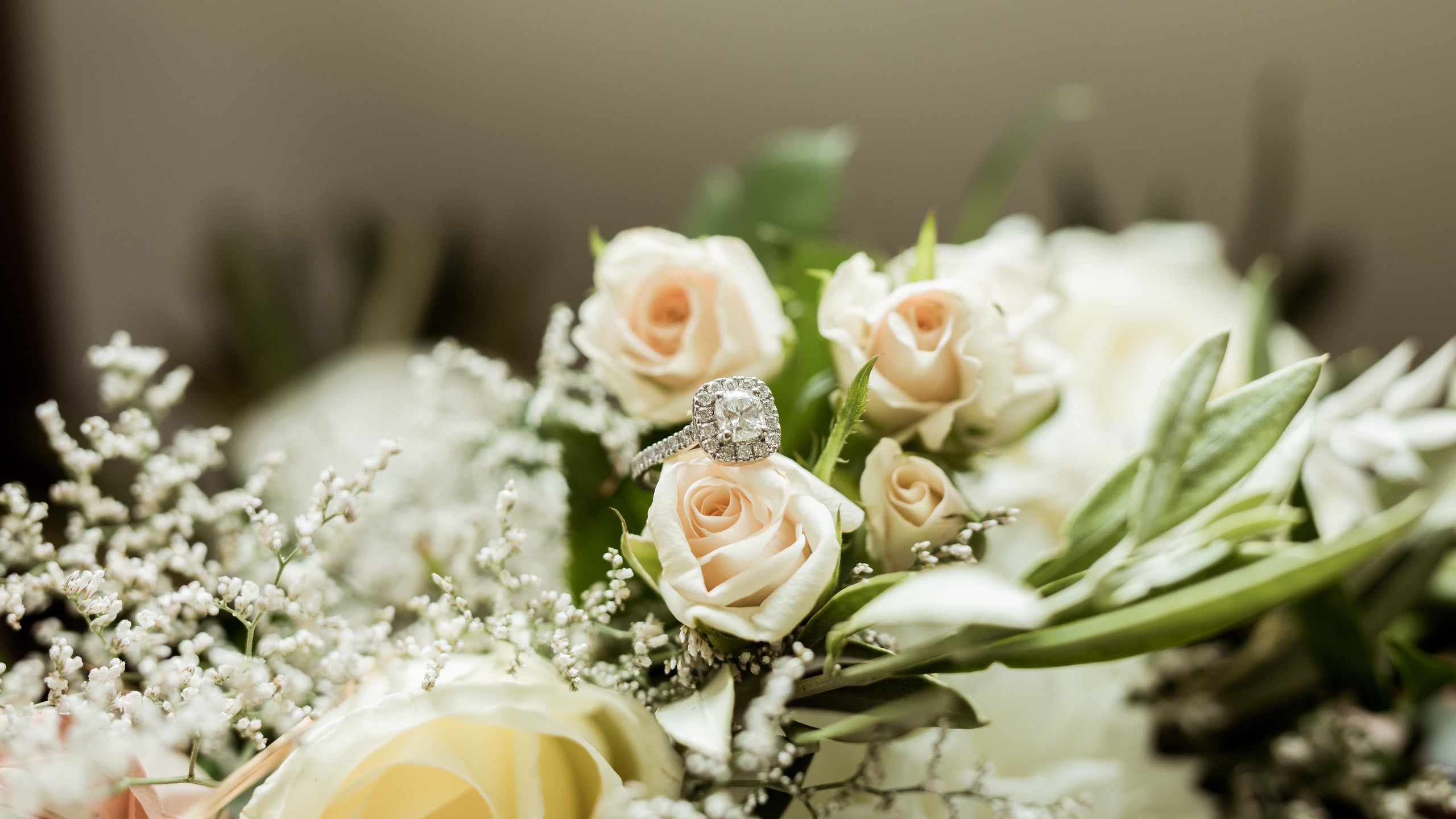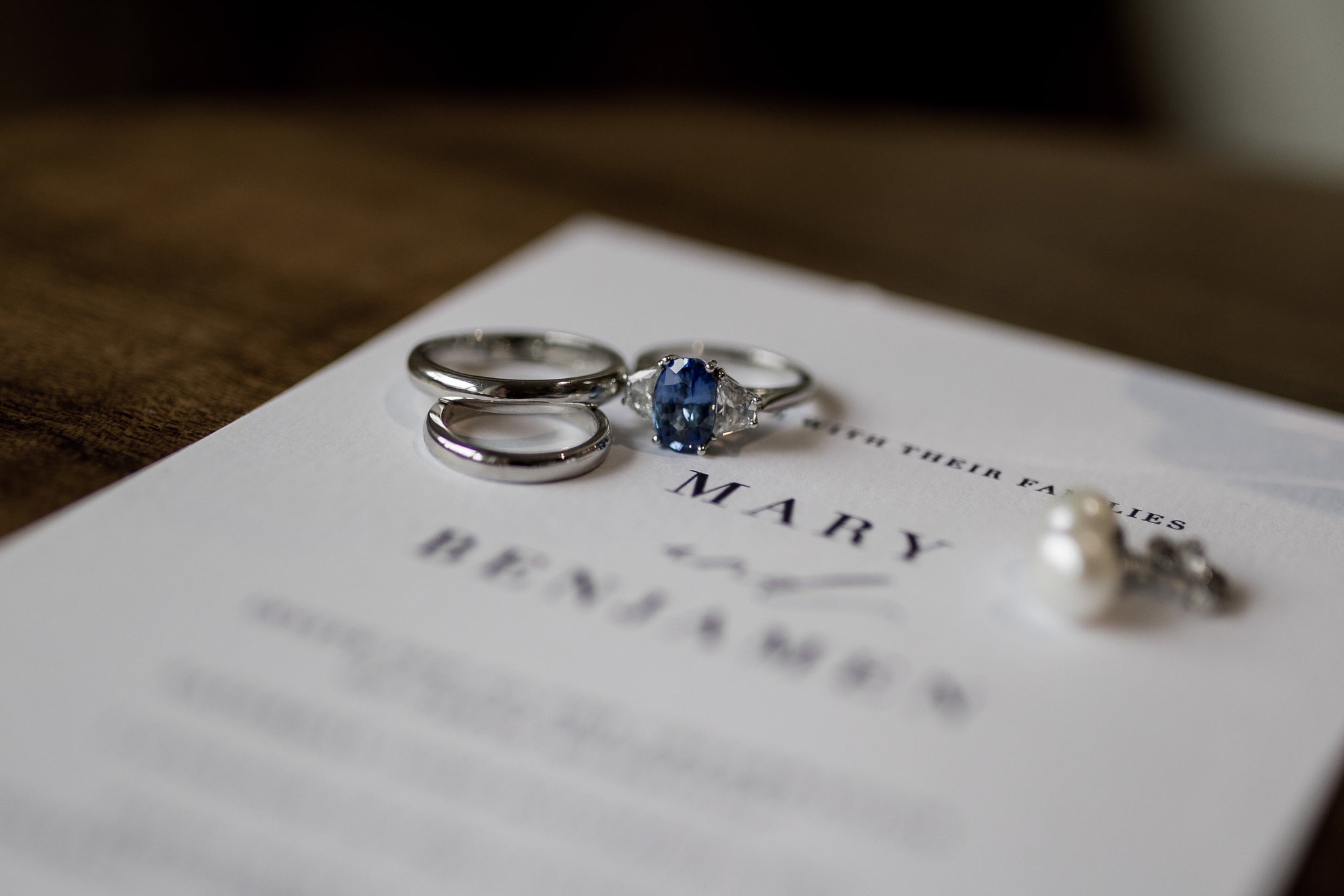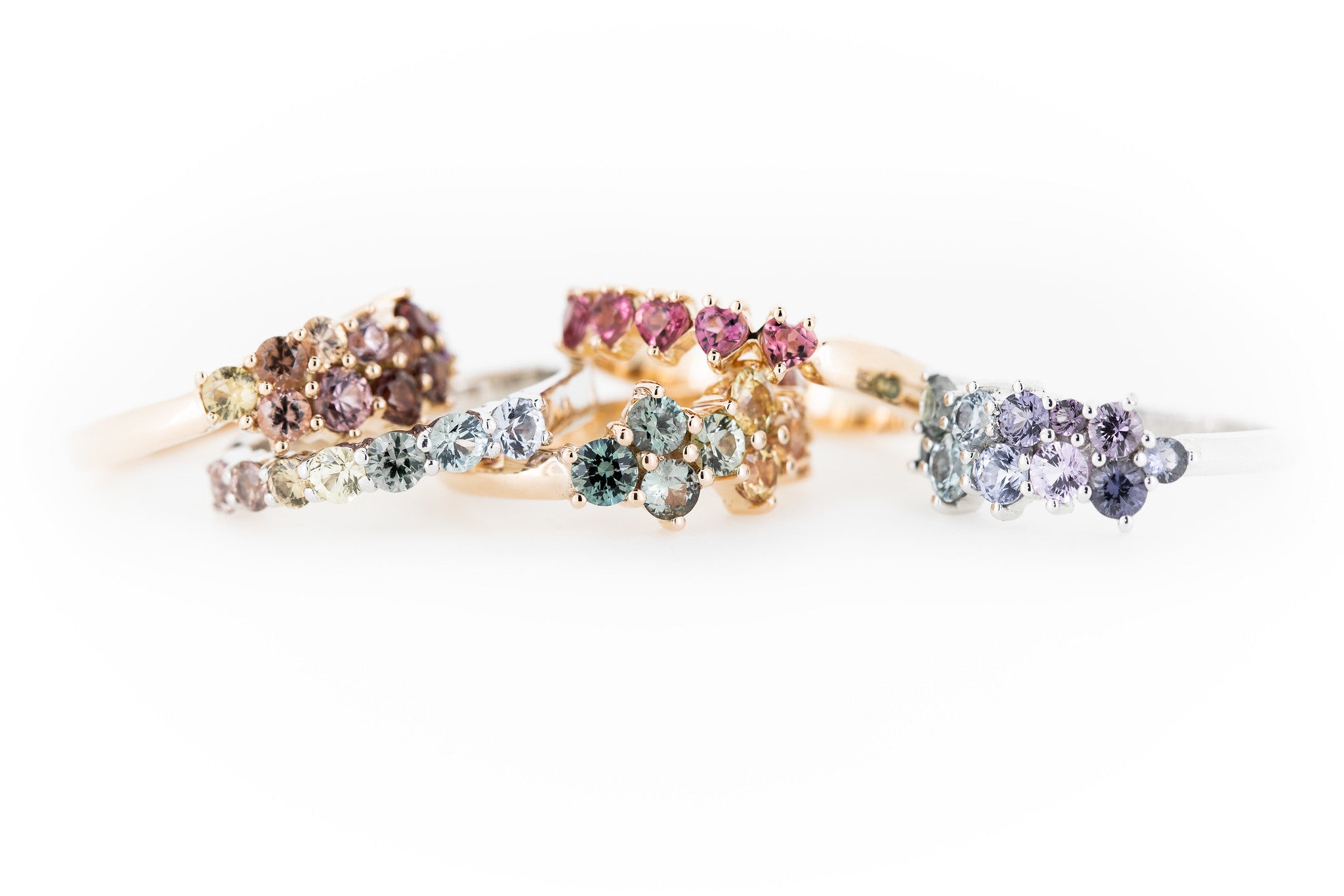

The perfect ring sizer to find your perfect ring size!
All from the comfort of your own home. Get yours now!
Gemstones
OPAL

HARDNESS: 5.5-6.5 (similar to glass)
LOCATION: Australia (Over 95% of the worlds Opal comes from Australia), Ethiopia
BIRTHSTONE MONTH: October
FACTS:
- Opal is made with a combination of water and silica (SiO2.nH20)
- The sparkle and glitter in Opals is known as ‘Play of Colour’ and is caused by interference and diffraction of light passing through tiny silica spheres
- Opal forms from the silica that is created from water seeping through sandstone. The silica then flows into cracks and voids in rocks
- Forty meters below, a thickness of one centimetre of Opal has been estimated to take 5 million years to form and approx. 1 to 2 million years after, it has been said to solidify due to climate change
- The myth that Opals are unlucky comes from the novel ‘Anne of Geierstein’
TOURMALINE

HARDNESS: 7-7.5
LOCATION: Afghanistan, Pakistan, Russia, Burma, Sri Lanka
BIRTHSTONE MONTH: October & 8th Anniversary
COLOURS: Every colour from colourless through to black, including pastel to dark shades of each colour along with various colours in the same stone
FACTS:
- Tourmaline is a crystalline boron silicate mineral with elements such as aluminium, iron, magnesium, sodium, lithium or potassium
- All coloured Tourmalines display ‘pleochroism.’ which means their colour, when viewed at different angles changes subtly. In some stones, this is barely noticeable but with others is quite apparent
- Watermelon Tourmaline is a naturally formed bi-colour gemstone with either a red/pink centre with a surrounding green layer or vice versa
- Tourmaline translates to ‘Turamali’ meaning ‘stone of mixed colours’
- Pyroelectricity - Tourmaline becomes electrically charged when it is heated
- Piezoelectricity – Tourmaline becomes electrically charged under extreme pressure


HARDNESS: 8
LOCATION: Afghanistan, Tanzania, Thailand, Sri Lanka
BIRTHSTONE MONTH: August
COLOURS: Red, pink & orange, along with steely blue/lavender/lilac
FACTS:
- Spinel is Magrnesium Aluminium Oxide
- Some Spinels can have inclusions within the stone that perfectly resemble a human fingerprint
- Spinel is considered to be a calming stone and is thought to relieve those suffering from stress
- Spinel is so similar to Rubies, that it wasn’t until the discovery between the two was made, that Gemmology existed as a whole new world to explore
- The famous 14th Century Black Prince's Ruby in the British Imperial Crown is actually a red Spinel


HARDNESS: 6.5 – 7.5
LOCATION: Russia, Brazil, Thailand, Africa, Kenya, Tanzania
BIRTHSTONE MONTH: January & 2nd Anniversary
COLOURS: All colours
FACTS:
- The most commonly known Garnet is Almandine, which is a dark reddish brown colour coloured by Iron
- Pyrope Garnet is another Red type of Garnet coloured by Magrnesium that shows a beautiful deep red flash
- Rhodolite is a beautiful pinky/purple/reddish Garnet coloured by a combination of the Pyrope & Almandine Garnets – Magnesium and Iron
- Tsavorite Garnet is a beautiful bright green colour caused by trace amounts of the elements Chromium and Vanadium.
- Demantoid is a variety of the Andradite Garnet and is also a green but more of a yellowy-green. Demantoid Garnets from Russia show ‘horse-tail’ inclusions, which quite literally look like a little burst of hair within the stone, very similar to a Dandelion flower. When a Demantoid Garnet shows this inclusion, the value of the stone increases significantly


HARDNESS: 6-6.5
LOCATION: India, Tanzania, Madagascar, Sri Lanka
BIRTHSTONE MONTH: June
COLOURS: Colourless to white, Grey, Green, Peach, Brown
FACTS:
- Moonstone is a Feldspar – the minerals in the Feldspar family make up more than half of the Earths crust
- Moonstone shows a phenomenon known as Adularescense when alternating layers of Orhtoclase and Albite diffract light which we see as the beautiful flashy glow when you rotate the stone in direct light
- Feldspars layers that create Adularescense are similar to the size of a wavelength of light
- Rainbow Moonstone is the name given when the beautiful glowing flash shows multicolour rather than blues


HARDNESS: 9
LOCATION: Australia (dark blue and yellow), Madagascar, China, Afghanistan, Sri Lanka, Tanzania
BIRTHSTONE MONTH: September & 5th & 45th Anniversary
COLOURS: Blue, Yellow, Pink, White, Green, Purple, Black, Orange, Grey, Brown
FACTS:
- Sapphire is a variety of Corundum, belonging to the same family as Ruby and is an Aluminium Oxide
- Sapphire is typically blue in colour but comes in many other colours as well as a ‘parti-sapphire’ which show two or more colours
- The worlds most famous Engagement ring, Kate Middleton & Princess Diana’s, features a beautiful blue Sapphire
- Sapphire is so desirable not only because of its rarity and beauty but also its durability as it is second to diamond, which is the hardest gem.

HARDNESS: 10
LOCATION: Australia (mainly pink diamonds), Russia, Thailand, Brazil, India, South Africa, Canada
BIRTHSTONE MONTH: April & 60th & 75th Anniversary
COLOURS: Every colour
FACTS:
- Diamond form under high pressure and temperature conditions, only possible approx. 160km beneath the Earths surface
- Most Diamonds formed more than a billion years ago
- The Diamond is the only gemstone composed of one single element; Carbon
- Diamonds are 58 times harder than anything else in nature
- Diamond is Carbon, as is graphite, but they both have completely different formation processes and crystal structures. Graphite is so soft that it is used in pencils to write with, while Diamond is so hard that only Diamond can scratch Diamond.
- There is a star named Lucy, fifty light years from Earth that is a 10 billion-trillion-trillion carat diamond. It was named after its discovery in 2004 after the Beatles song ‘Lucy In The Sky With Diamonds’
- In most Diamond mines, there is a 1 to 1,000,000 ratio of diamond vs. host rock
Please let me know what you would love to have made
